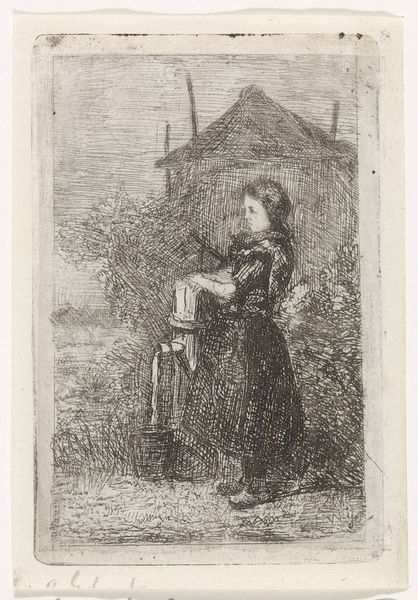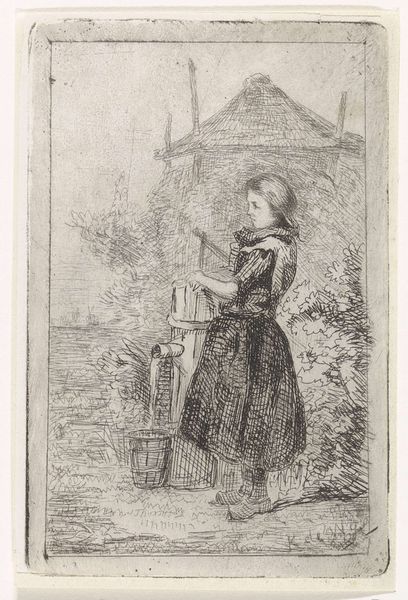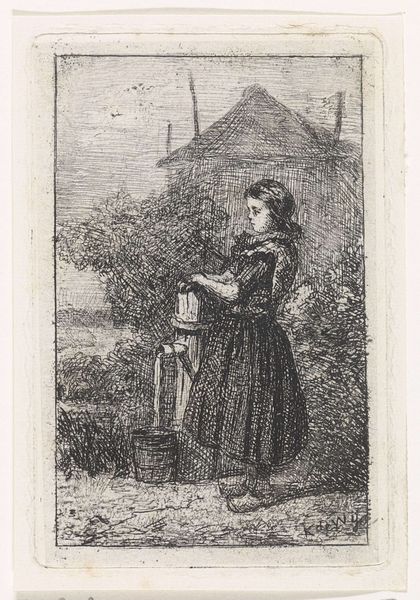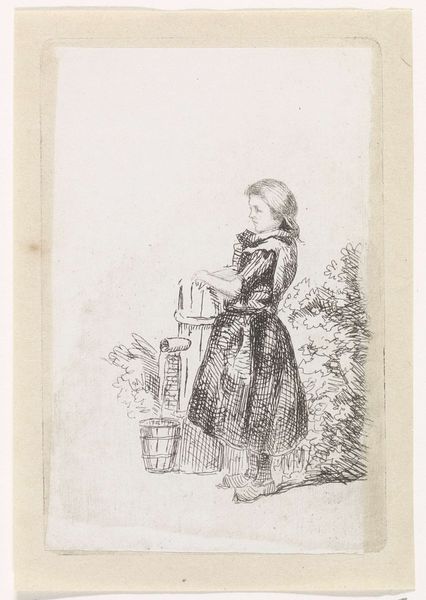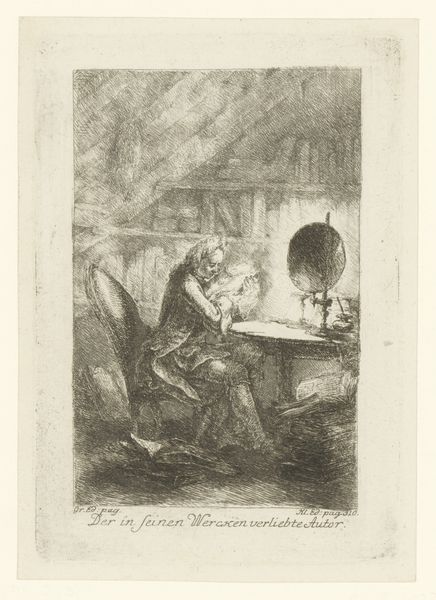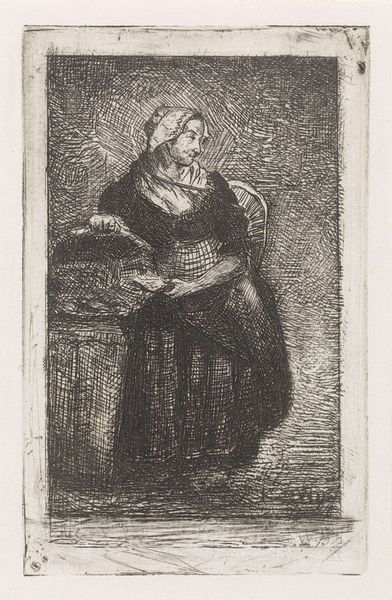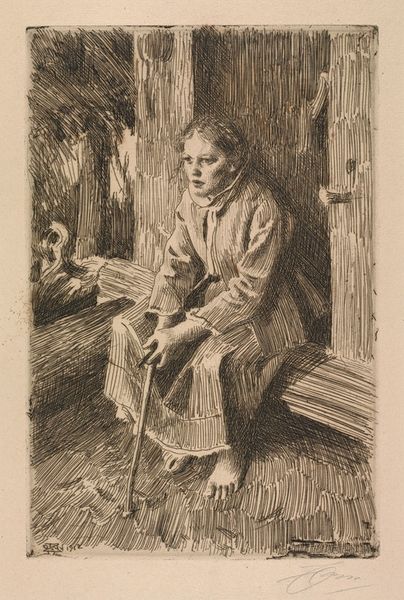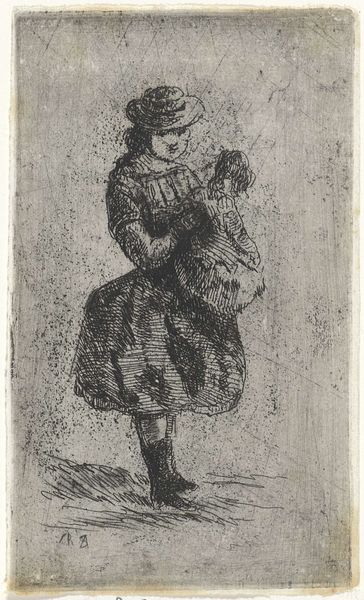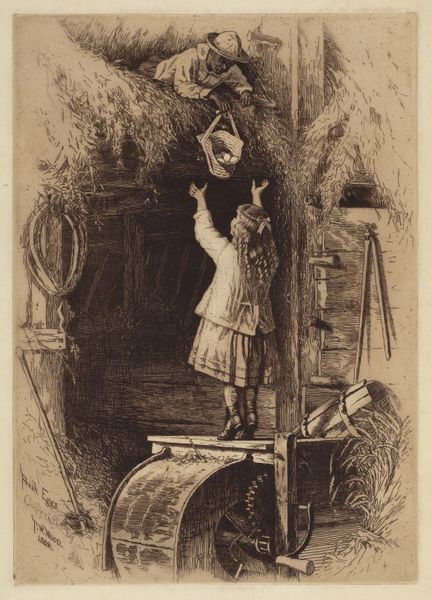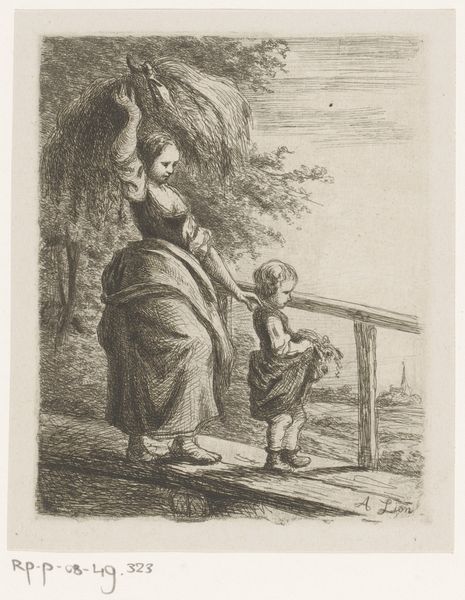
drawing, print, etching
#
portrait
#
drawing
# print
#
etching
#
genre-painting
#
realism
Dimensions: height 100 mm, width 66 mm
Copyright: Rijks Museum: Open Domain
Curator: Welcome! We’re standing before Kornelis Jzn de Wijs’s etching, "Girl at a Water Pump," likely created between 1842 and 1884. Editor: The delicate hatching gives it a quiet, almost wistful feeling. The figure seems pensive, overshadowed by the density of the lines. Curator: Indeed. As an etching, the plate was likely coated in wax, the image scratched through to expose the metal, then acid-etched before finally being printed. We can analyze the depth and varying widths of the lines to learn a bit more about the tools the artist used to produce the picture. Look closely. Editor: What catches my eye is how the simple act of drawing water becomes an icon of rural life. Water, traditionally a symbol of purity and sustenance, connects her directly to the land. It's powerful, that subtle association. Curator: From a materialist viewpoint, we have to think about the labor involved: in the production of the etching itself, in the daily life of the subject pictured. Her labor filling the bucket contrasts with that of the printmaker. We should ask whose labor is valued and how class is expressed. Editor: I’m interested in the composition: the girl at the very centre, the dark mass of her dress and the cottage behind. Perhaps these images reflect on vulnerability within a harsh rural existence. She is in direct relation with the water, as sustenance but also subject to material hardship. Curator: Absolutely. The water, the pump itself, all would have been material considerations too, in 19th-century Holland: where do they get water, who gets water, what is the labour? I wonder whether this reflects social anxieties about class? Editor: It makes you consider all of the weight carried by such seemingly ordinary depictions, right down to the simple act of pumping water. Curator: Looking closer allows us to understand more of the time through materials and technique. Editor: While contemplating the deeper symbolic language beneath the simple surface is crucial. Both remind us how rich even the simplest images can be.
Comments
No comments
Be the first to comment and join the conversation on the ultimate creative platform.
